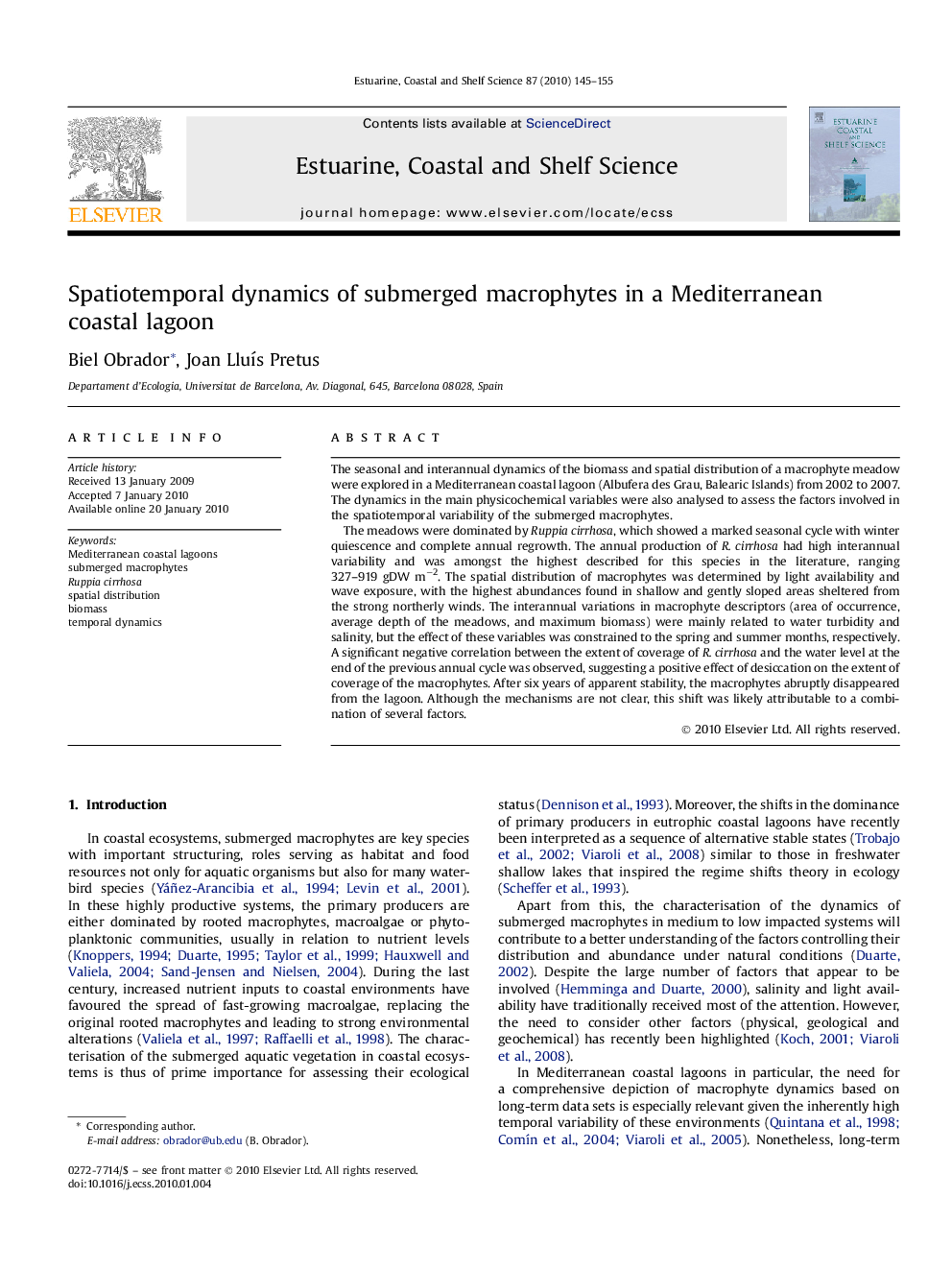| Article ID | Journal | Published Year | Pages | File Type |
|---|---|---|---|---|
| 4541097 | Estuarine, Coastal and Shelf Science | 2010 | 11 Pages |
The seasonal and interannual dynamics of the biomass and spatial distribution of a macrophyte meadow were explored in a Mediterranean coastal lagoon (Albufera des Grau, Balearic Islands) from 2002 to 2007. The dynamics in the main physicochemical variables were also analysed to assess the factors involved in the spatiotemporal variability of the submerged macrophytes.The meadows were dominated by Ruppia cirrhosa, which showed a marked seasonal cycle with winter quiescence and complete annual regrowth. The annual production of R. cirrhosa had high interannual variability and was amongst the highest described for this species in the literature, ranging 327–919 gDW m−2. The spatial distribution of macrophytes was determined by light availability and wave exposure, with the highest abundances found in shallow and gently sloped areas sheltered from the strong northerly winds. The interannual variations in macrophyte descriptors (area of occurrence, average depth of the meadows, and maximum biomass) were mainly related to water turbidity and salinity, but the effect of these variables was constrained to the spring and summer months, respectively. A significant negative correlation between the extent of coverage of R. cirrhosa and the water level at the end of the previous annual cycle was observed, suggesting a positive effect of desiccation on the extent of coverage of the macrophytes. After six years of apparent stability, the macrophytes abruptly disappeared from the lagoon. Although the mechanisms are not clear, this shift was likely attributable to a combination of several factors.
